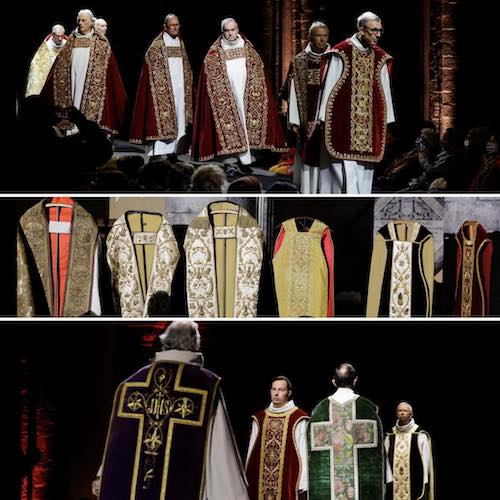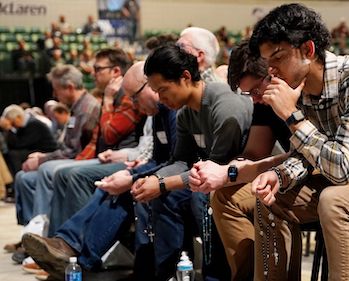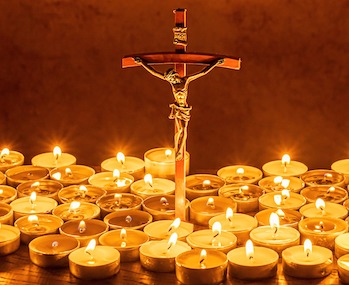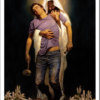Clad in elaborate priestly garments, volunteer models strode down the runway to organ music in the Cathedral of the Belgian city of Tournai.
During the show, models presented the garments, which showed the evolution of priestly attire from the 17th to the 21st century, to an audience of around 100 people. Ornaments dating back to the 15th century that are stored at the cathedral were too fragile to be shown.
The unusual show on Wednesday organised by the cathedral, is part of an effort to promote its collection of religious textiles it says are Belgium’s richest.
It featured around 30 garments including liturgical capes known as chasubles embroidered with gold and silver thread.
This was the first time in 50 years the garments were shown to the public, cathedral historian Michel-Amand Jacques said.
Rudy Opsomer, the president of the Friends of the Tournai Cathedral, said the garments were usually kept in the church’s chambers, far from the public eye.
“It was a shame that they were no longer visible to the general public,” Opsomer said. “It’s an opportunity to see things beyond the religious side of these clothes.”
Opsomer said that since the clothes are considered sacred, they could not be donned by people other than religious officials. Church tradition obliges cathedral staff to burn the garments once they are worn out.
So, he said they were lucky to have the permission of Tournai’s Bishop Guy Harpigny to hold the show.
The way priests dress has evolved through time, Jacques said, with the more detailed and extravagant garments worn in the Baroque period being replaced by simpler ones that follow guidelines set by the Second Vatican Council in 1965.
In the 18th century, Jacques said, a set of priest’s clothes cost 15,000 to 18,000 French livres, which today amounts to around 250,000 to 300,000 euros ($286,000 to $343,000) – the same price as a medium-sized church at that time.
“Times have changed, the church has changed,” Jacques said. “We have to put ourselves in the shoes of people at that time, in the 17th or 18th century, when these ornaments were an offering to God.”
Harpigny, who attended the show, said the event was not a way for the church to brag about its past riches, but rather to show how the institution accompanies cultural and artistic movements throughout time.
“The fact that we’re showing the national heritage of the church to society is a wonderful thing,” he said.
(Reuters)













